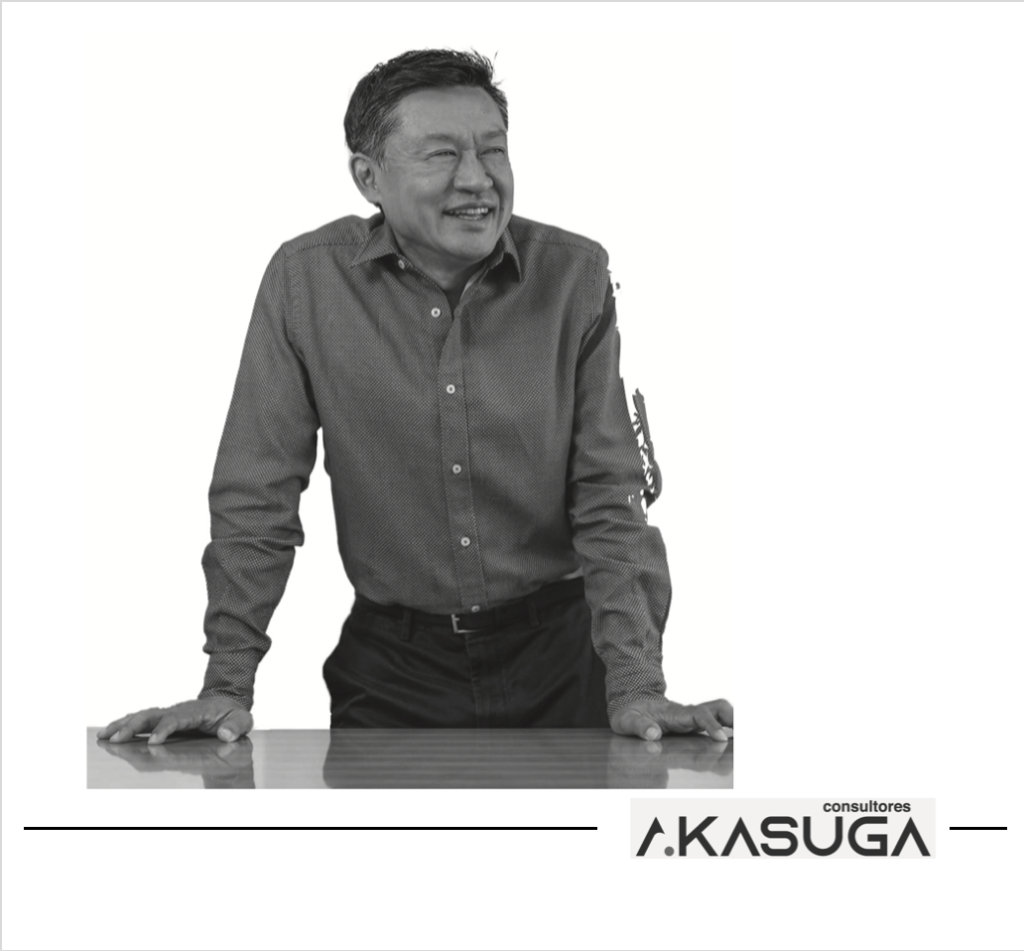By: Alejandro Kasuga
President
A. KASUGA CONSULTORES
It is a fact that today’s world is increasingly changing and requires that both individuals and organizations have a focus on the formation of a culture of continuous improvement that allows us to anticipate the new needs of the environment. We generally focus on improvement projects such as quality circles, kaizen, lean, six sigma among many other methods which have a great impact, however they are top to bottom schemes where engineers and top management manage continuous improvement relegating lower positions who also have a lot of knowledge and are not taken into account as they should be.
The key problem in the formation of a culture of continuous improvement is first of all, the definition of organizational culture. From my personal point of view, organization comes from the Latin ORGNAUM, an organ is a living being that has to adapt according to the changing environment. All the cells of the organ have to communicate towards the same objective, otherwise they are cancerous cells that have to be eliminated. My body is made up of many organs and cells and the reality is that my right hand does not care much about what my liver does. My liver doesn’t care much about what my lung does, my lung doesn’t care much about what my tongue does, but together they make my body work. In the same manner in many companies the person who recruits doesn’t care much about what the purchasing department does, the person who works in sales doesn’t care much about whether or not the production objective was achieved, the employee at accounting doesn’t care much about whether there was a problem in logistics. So what is organizational culture?
Organizational culture is the blood and veins that unite all the organs and cells of our body at all times, in all places and by everyone.
It is a fact that today’s world is increasingly changing and demands that both epmployees and organizations have a focus on continuous improvement as part of our DNA in order to anticipate the new needs of the ever changing environment. If we fail as company leaders to create an organization focused on improvement as a culture, we will become dinosaurs; perhaps very large companies with a lot of strength but very slow in the way we move, and the reality is that we have to transform ourselves into chameleons. Constantly seeing how the environment changes and adapting to it as quickly as possible to survive.
In my experience as an entrepreneur and consultant I have had the opportunity to see continuous improvement from different points of view and in different work cultures and this cultural mix that formed me from the beginning of my professional career was what influenced me to develop what is now known as Kizukai®, my continuous improvement methodology.
After having completed my studies in business administration at UC Berkeley and a specialization at Hitotsubashi University in Tokyo, I started collaborating in Yakult Japan and had the opportunity to learn all the benefits of a Japanese working culture in which there is a wide respect for issues such as punctuality, efficiency and always seeking maximum customer satisfaction. Later I moved to the consulting firm Deloitte, where employees are more individually focused on obtaining results, this being the basis of their working style.
Having two different working culture as my professional background, I returned to Puebla, Mexico. here I began to manage the leading company in the probiotics industry with the objective of blending the Japanese discipline with the Latin creativity and the results-oriented approach of the American.
As part of my cultural transformation strategy, I decided to change the mission and vision of the company. I spent hours and hours selecting the correct words and meaning; and I made sure that all my employees knew them by heart, the result was not what I expected, although everyone could recite it without error, the culture remained the same.
I decided to use another strategy by applying the theory of communicating vessels. In which if you pour water into a single glass the other vessels are filled. I decided to focus on pouring water in the vessel of order and cleanliness since it is a visual and tangible change and there is a methodology named 5’s recognized worldwide. It was thanks to this that all employees began to develop new positive habits such as punctuality, respect for rules, teamwork, and empathy. I could say that this change was what laid the foundations of our organizational culture, it took us years to achieve it, but thanks to the fact that order and cleanliness are visual and tangible we were all able to experience the benefits gradually. In other words, order and cleanliness was the blood and veins that united all the organs of the organum.
After consolidating our organizational culture, we won the National Quality Award and the Ibero-American Quality Award. However, despite all the awards, we still made “silly” mistakes inside the company. Those mistakes such as rework, reprocessing, and errors that everyone knew about, and no one does anything to solve them.
I decided to set myself the task of finding the formula that would allow me to mix the creativity that characterizes Mexicans, the discipline and attention to detail of the Japanese and the focus on results of the Americans.
Kizukai is a Japanese term to describe to be concerned about others. In my point of view unless you care about how your daily work impacts internal and external clients, it is difficult to come up with good ideas. This is a methodology that is composed of four K’s. Starting with the K1, which is the name given to the basic functions that each employee must fulfill, that is to say, what he/she is paid for and what gives his/her job its raison d’être, then we have the K0, which is the deficient state of a job, in other words, when the employee is performing his/her job badly, then we have the K3, which is the final objective of what we do as employees, that is, the impact that our basic activities have on the external and internal customer, and finally we have the K2, which are all those ideas for improvement that as an employee I can contribute so that in a methodological way the impact of my position is increasingly profitable for the objectives set by the company.
The objectives set by the company, in my methodology we call them guidelines, and with these guidelines is that we focus the improvement ideas of the people, these guidelines can be; reduction of costs, reduction of times, reduction of accidents, sales increase, customer satisfaction and so on.
To break with the power and egos that exist in every organization, I decided to create the Kizukai committee. The members of this committee have the responsibility of being mentors or coaches for improvement. The employee, knowing that his idea does not go to the boss and that he/she has a mentor, makes it emotionally easier to give ideas for improvement. Additionally, I developed a web application that collects and manages all the information to follow up on all the ideas, so that each employee knows in which management process their idea is in and that it is a transparent and objective process. This helped to change the work environment by giving empowerment (voice and vote) to all employees based on their expertise.
Within the Kizukai® methodology, each improvement idea generated by an employee is managed us9ng the 6 step method: approval, implementation, verification, measurement, evaluation and documentation, which facilitates that all the company’s knowledge is managed and talent is not wasted.
Unlike other continuous improvement methodologies, with Kizukai we seek improvement from the bottom up and not otherwise, and we help the organizations that implement it to obtain objective results. In this methodology the last word is in the results, since an improvement idea is neither good nor bad until it is measured.
Kizukai, has been implemented in companies at the highest level and in all sectors, such as; Tajin, Honda, Enel, Suzuki, Hi-Lex, Keken, among others, and that has allowed me to verify that the greatest value of organizations is still their people, because thanks to their talent, openness and focus we have implemented disruptive ideas with verifiable results both in the industry and in the service sector.
Although continuous improvement is a concept that emerged in the 80’s, it is more valid than ever, now everything evolves faster than it did years ago and while everything continues to change in our environment, companies cannot remain inert in this scenario, we must move with the environment and the best way to do this is by teaming up with our people, listening to them and giving them tools to channel all the experience and proactivity they possess.
Without the involvement of employees, it will be very difficult for organizations to grow or even survive, so for those who read these lines, I hope you give yourselves the opportunity to bet on new methodologies that reduce the gap between managers and employees and bet on the potential that an idea for improvement can have.




